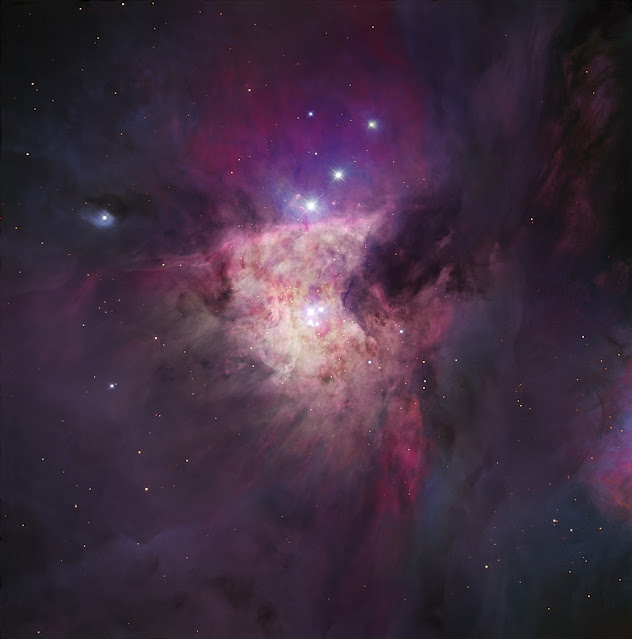The Birth of the Hunter | ESO
The constellation of Orion (The Hunter) is one of the most recognisable collections of stars in the night sky. We have noted Orion’s prominent stars for tens of thousands of years at least, and likely far longer. Chinese astronomers called it 参宿 or Shēn, literally “three stars”, for its three bright dots (which form the Hunter’s belt). The ancient Egyptians regarded it as the gods Sah and Sopdet, manifestations of Osiris and Isis, respectively, whereas Greek astronomers saw a brave hunter—the eponymous Orion—with his sword above his head, ready to strike.
Mythology aside, Orion is a fascinating patch of sky. This image, from the European Southern Observatory's Very Large Telescope, shows a reflection nebula nestled at the heart of the constellation—NGC 2023. Located close to the well-known Horsehead and Flame Nebulae, NGC 2023 lurks about 1,500 light-years away from Earth, and is one of the largest reflection nebulae in the sky.
Reflection nebulae are clouds of interstellar dust that reflect the light from nearby or internal sources, like fog around a car headlight. NGC 2023 is illuminated by a massive young star named HD 37903. The star is extremely hot—several times hotter than the Sun—and its bright blue-white light causes NGC 2023’s milky glow. Such nebulae are often the birthplaces of stars, and contain a clumpy distribution of gas that’s significantly denser than the surrounding medium. Under the influence of gravity, these clumps attract one another and merge, eventually creating a new star. In a few million years time, Orion's Belt may gain a new star!
The image was taken with the Very Large Telescope’s FORS (FOcal Reducer and Spectrograph) instrument as part of the ESO Cosmic Gems program. This initiative produces images of interesting and visually attractive objects using ESO telescopes, for the purposes of education and outreach. The program makes use of telescope time that cannot be used for science observations. All data collected may also be suitable for scientific purposes, and are made available to astronomers through ESO’s science archive.
Credit: European Southern Observatory (ESO)
Release Date: May 13, 2019
#NASA #ESO #Astronomy #Space #Science #Stars #StarFormation #Nebula #ReflectionNebula #NGC2023 #Star #HD37903 #Orion #Constellation #MilkyWay #Galaxy #Cosmos #Universe #VLT #FORS #LaSillaObservatory #Chile #Europe #STEM #Education
.jpg)
.jpg)









